The Pre-Raphaelites Flashcards
1/24
Earn XP
Description and Tags
Flashcards about the Pre-Raphaelites art movement.
Name | Mastery | Learn | Test | Matching | Spaced |
|---|
No study sessions yet.
25 Terms
Pre-Raphaelites
A group of English painters, sculptors, poets and critics founded in 1848. Reacted against the Classicism of the Royal Academy → Founder of the Academy Joshua Reynolds admired Raphel the most. Returned to Italian and Flemish art of 14th and 15th centuries. Medievalism - appreciated the spirituality and idealism of Italian primitives - late Gothic and Early Renaissance, before Raphael. Praised naturalism and meticulous realism of Flemish painting. Imitated true fresco to paint on wet white ground. Created art of noble, religious and moralising nature - focused on biblical and literary themes.
William Holman Hunt
Founding member of the Pre-Raphaelite Brotherhood (1827-1910). Followed meticulous realism and naturalism of Ruskin throughout - treated his subjects with miniature-like details. Mouthful to medieval spirituality - moral and religious messages in his art. 1854 traveled to Egypt and the Holy Land
Dante Gabriel Rossetti
Founding member of the Pre-Raphaelite Brotherhood (1828-1882), also a painter and poet and a translator of early Italian poetry - compared himself to Dante. Admitted to the academy at 17. Attracted by the writings of William Blake. Moved from meticulous realism to eventually establish his own style.
John Everett Millais
Founding member of the Pre-Raphaelite Brotherhood (1829-1896).Admitted into the Academy at 11, talented painter. Protege of John Ruskin - followed his urge for realism. Broke away from Ruskin later in life and went into the academic stream. !853 - Became an Associate Member of the Royal Academy and president from 1896
John Ruskin
Writer, art critic, and painter who supported the Pre-Raphaelites and defended their style in his pamphlet "Pre-Raphaelitism". Distaste for materialism and the ugly industrialisation of Egland. Taste for Romanticism (medieval culture and nature in landscapes), anti-Classicism (idealisation) and anti-Baroque (drama, eroticism). Study of nature as a science = beauty → absolute truthfulness of its depiction can teach moral lessons. Mentor of Millais. Author of “Modern Painters” 1843-1860.
Florentine linearism
Rediscovered by the Pre-Raphaelites, especially works of Sandro Botticelli, which circulated in British and German art markets in the 19th century.
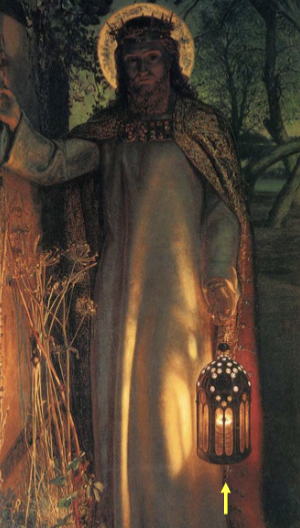
Light of the World. William Holman Hunt 1851-53
Painting created by William Holman Hunt (1851-3), an allegory of Christ knocking at the door of the human soul. Light of salvation and conscience.
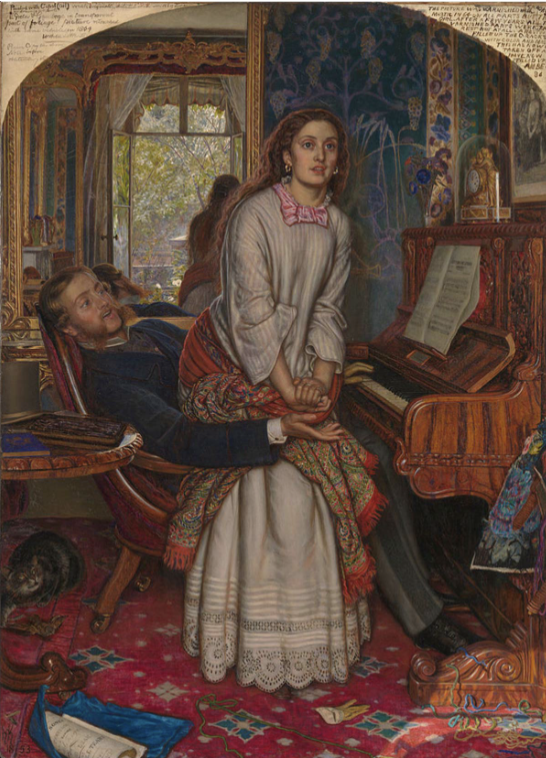
Awakening Conscience. William Holman Hunt 1853
Painting created by William Holman Hunt (1853), subjects taken from Charles Dickens’ David Copperfield. Theme of fallen woman – popular in Victorian art (1837‐1901). Mirror symbolises her lost innocence. Ray of light cast on her - redemption. Rich in symbols. The subject of the painting is a young woman depicted in a moment of realisation with her seducer, reflecting societal issues regarding morality and redemption.
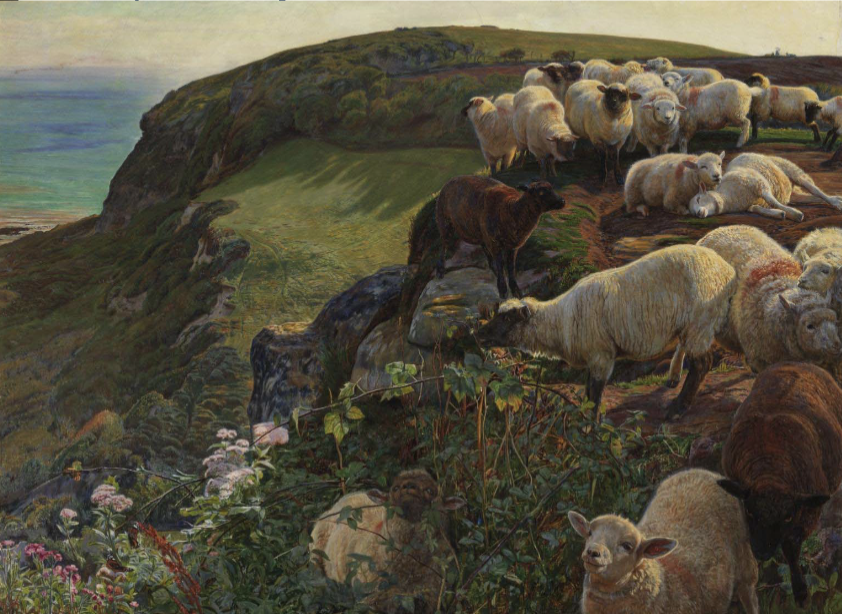
Our English Coasts (Strayed Sheep). William Holman Hunt 1852
Created by William Holman Hunt (1852), naturalistic study with symbolic religious meaning. Faithful balances of colour and shade, sensation of sunshine - Ruskin. Naturalistic study - breakdown of light into prismatic colours. Subtle religious meaning.
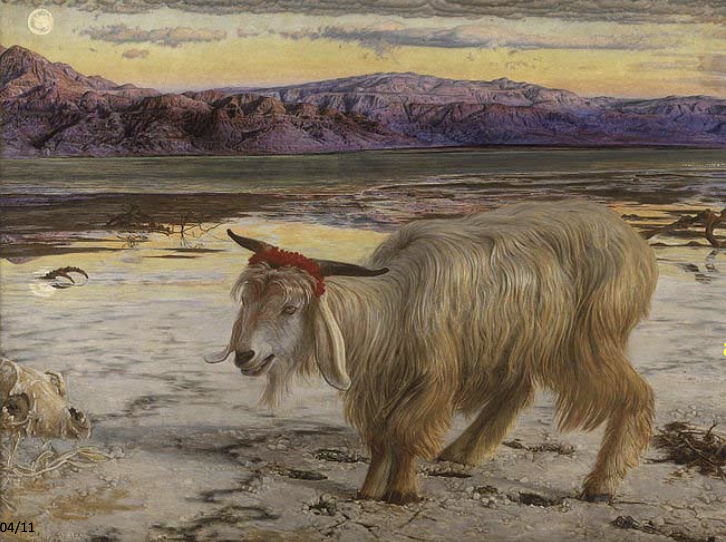
Scapegoat. William Holman Hunt 1854
Created by William Holman Hunt (1854), naturalistic treatment of the animal – with extremely fine details. Precursor to surrealism. Painted on his pilgrimage journey. Jewish ritual of leaving a goat in the wilderness - symbolically learning away the sins of the peopleand representing themes of sacrifice and redemption. The goat is a sacrifice and a saviour → landscape with bones and bare.
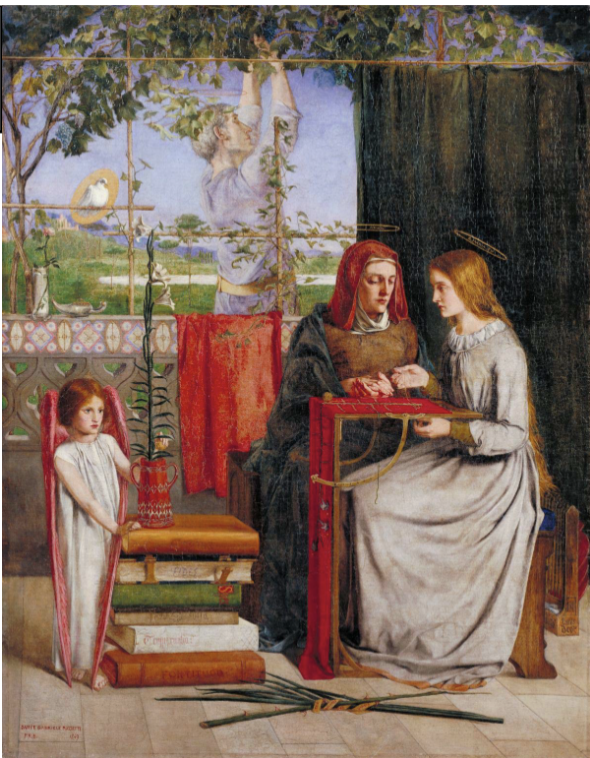
Girlhood of Mary Virgin. Dante Gabriel Rossetti (1848-49)
Painting created by Dante Gabriel Rossetti (1848-49), revives medieval spirituality with religious art and strong symbolism. Lily for purity and immaculate conception, palm leaves and thorn for sacrifice of her son, books for virtues. Figures stiff with lack of expression - early 15th century Renaissance art.
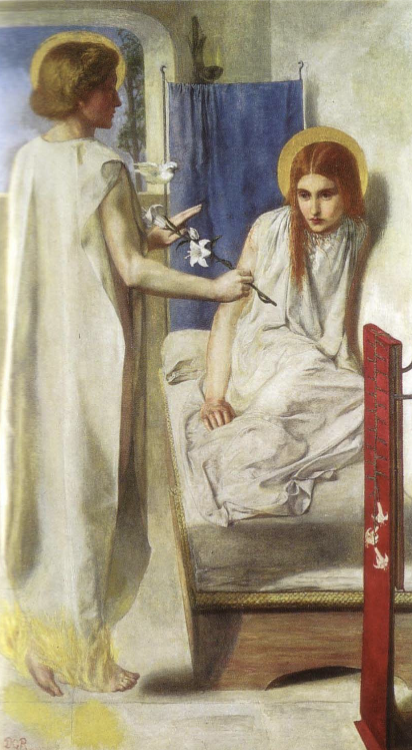
Ecce Ancilla Domini! (Here’s the Lord’s Servant!) (Annunciation) Dante Gabriel Rossetti 1850
Painting created by Dante Gabriel Rossetti (1850), contrary to the conventional representation of Mary kneeling in front of Archangel Gabriel, Rossetti’s Mary is rising strangely from a low bed. Dream-like expression, symbols - dove & lily. Using Latin titles - medievalism.

Beata Beatrix (Blessed Beatrice) Dante Gabriel Rossetti 1864-70
Painting created by Dante Gabriel Rossetti (c. 1864-70), sfumato – turned away from meticulous realism. Identified himself with Dante - Dante described Beatrice as being mystically transported to Heaven. Parallel between Dante’s love for Beatrice and Rossetti’s love for his wife. His wife committed suicide by taking opium - portrayed in a death trance. Red dove - Holy Spirit/love/a messenger, white poppy - opium/death.

Proserpine
Painting created by Dante Gabriel Rossetti (1874), Victorian beauty, sensually alluring but aloof. Wife of William Morris as the model. Ideal female beauty of Rossetti - long neck, soulful eyes, sensuous rosebud mouth and flowing hair. Greek mythology.

Astarte Syriaca. Dante Gabriel Rossetti (1877)
Painting created by Dante Gabriel Rossetti (1877), the woman – half‐threatening and half‐ alluring. Also Morris’ wife. Romantic mysticism - love goddess of Syria abandoned the world of light to live in the underworld - self sacrifice. Worshipped for her power over nature. Occult underworld. Modelled on a 6th century Byzantine icon.

Christ in the House of his Parents (Carpenter’s Shop). John Everett Millais 1849
Painting created by John Everett Millais (1849), Christ is showing his stigmata – hints to crucifixion. Child with a bowl of water - St John the Baptist. Recalls the coolness and stiffness and unnatural expression of medieval painting. Symbolism: sheep - christ is a shepherd, red flower - passion of christ.
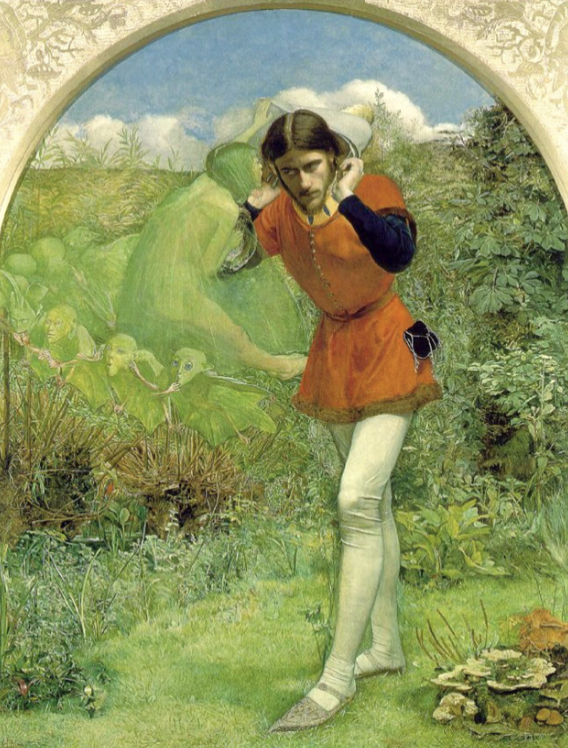
Ferdinand Lured by Ariel. John Everett Millais 1849
Painting created by John Everett Millais (1849), illustration for Shakespeare’s Tempest. Ferdinand heard Ariel’s singing but could not see her → supernatural creature, Romantic mysticism. Fairies commonly painted in Victorian art, believed to exist. Elaborate landscape with extremely fine realism.

Ophelia John Everett Millais 1851-52
Painting created by John Everett Millais (1851-52), admired for the extremely accurate depiction of a natural landscape captured on-site and the image of the drowning girl – the model stayed in water for hours. Tragic-romantic theme of Shakespeares’s Hamlet → girl went mad when her lover killed her father, drowns herself in a stream.
Edward Burne-Jones (1833-1898)
mid 1850s – became Rossetti’s pupil, travelled to Italy - influenced by Botticelli in Florence —> women with pale ivory skin, elegant poses and melancholic expressionless goddesses, dense vegetative decoration from medieval tapestries, typical themes of his art – myths and dreams.
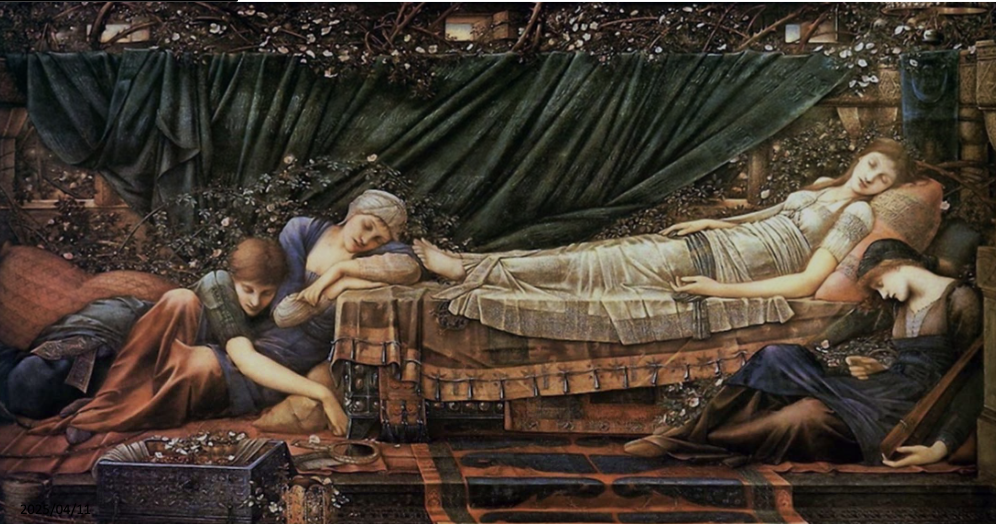
Sleeping Beauty, The Rose Bower from the Briar Rose series. Edward Burne-Jones 1871-90
Painting created by Edward Burne-Jones (1871-90). An idealised medieval world; attractive, cool and unreachable females placed in excessively decorated settings with botanical details. Story from Grimm Brothers fable.

Laus Veneris (Praise of Venus). Edward Burne-Jones 1873-78
Painting created by Edward Burne-Jones (1873-78), dreamy, languorous and remote in mood and setting. Pale sickly women with typical ivory flesh colour imitating Botticelli. Victorian beauty - objects of desire but chaste and remote.
William Morris 1834-1896
poet, writer, painter and designer, admired Botticelli, founded a textile design firm with Jones and Rossetti, keen promoter of the Arts and Crafts Movement, England.
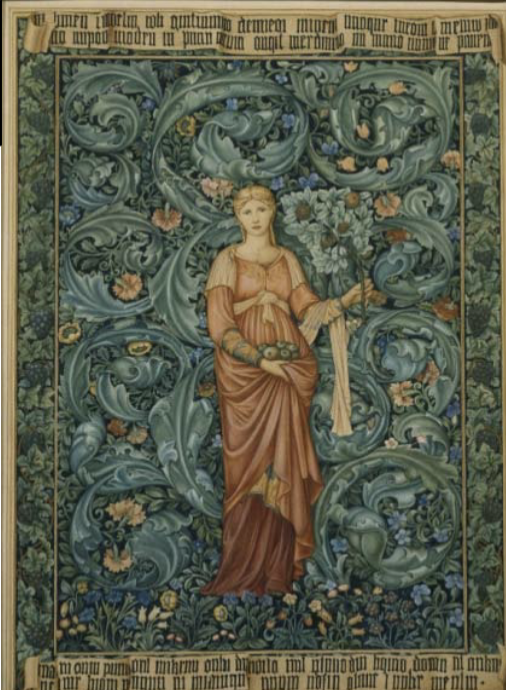
Pomona. Edward Burne-Jones & William Morris 1884
Design for the Tapestry (figure by Burne-Jones, background by Morris), Roman goddess of fruits from trees; elegant pose. Plants in the background like a herbarium - medieval illustration for botanical studies. Purely decorative. Latin inscription.
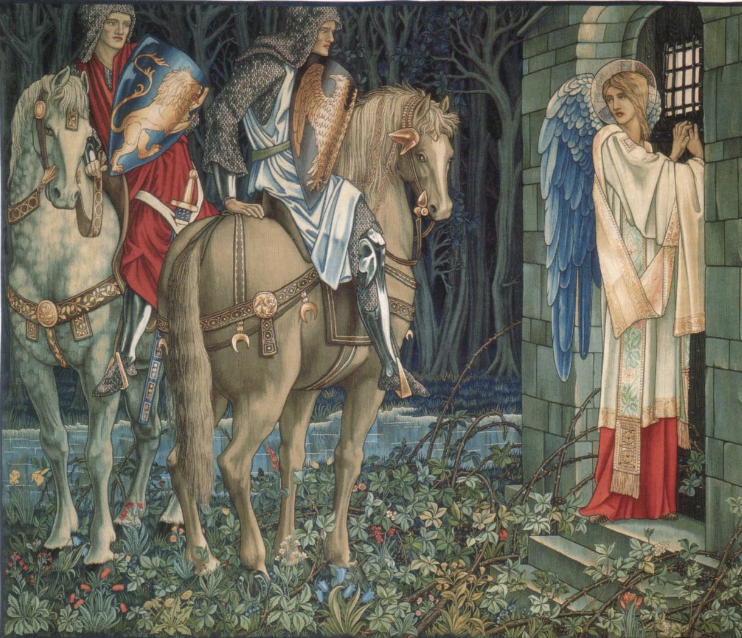
Failure of Sir Gawain. William Morris 1895-96
Tapestry created by William Morris (1895-96), inspired by the Legend of King Arthur – medieval literature. Idealised medieval world - highly spiritual and uncorrupted. Figures elongated, echoes Gothic statues.

Textile design. William Morris 1870